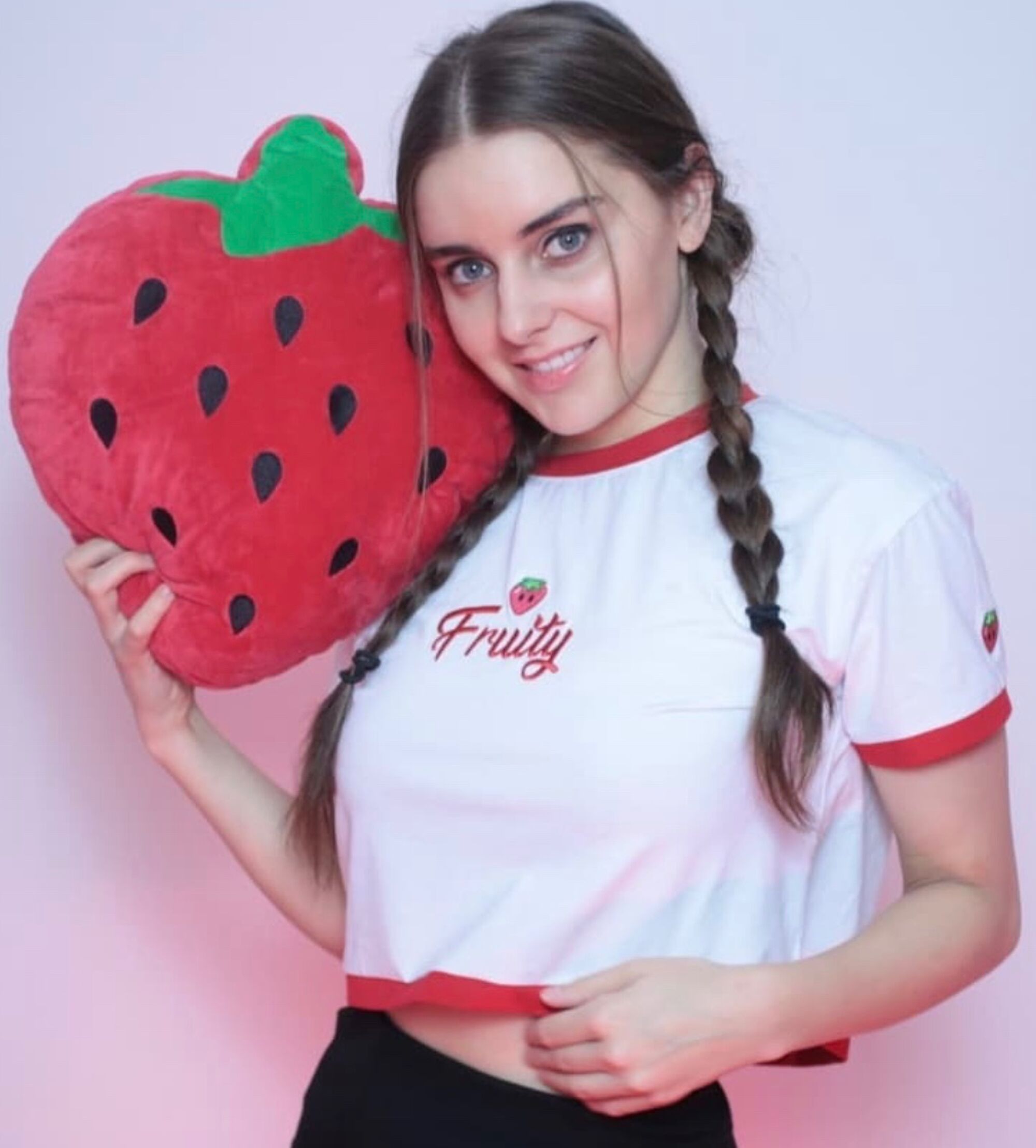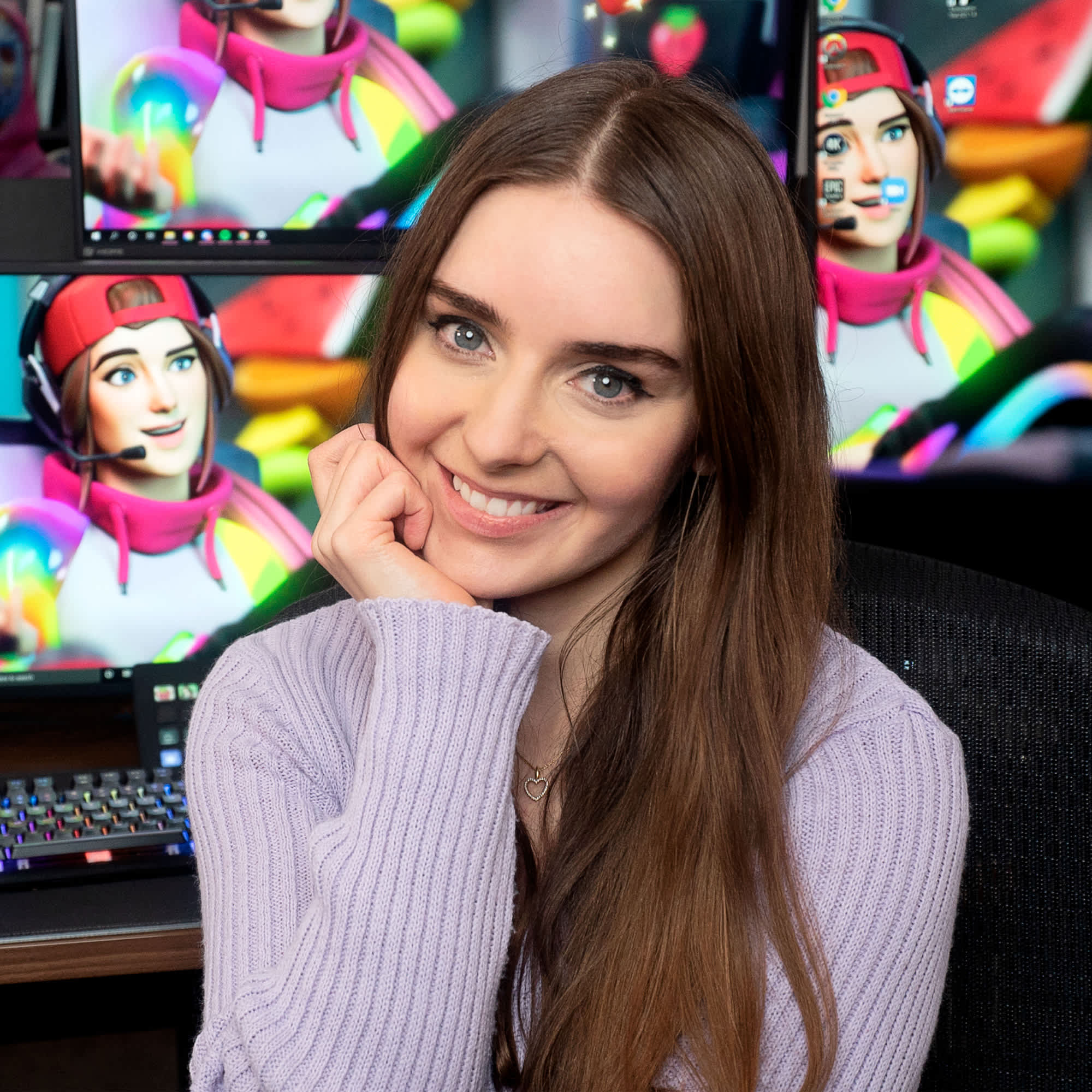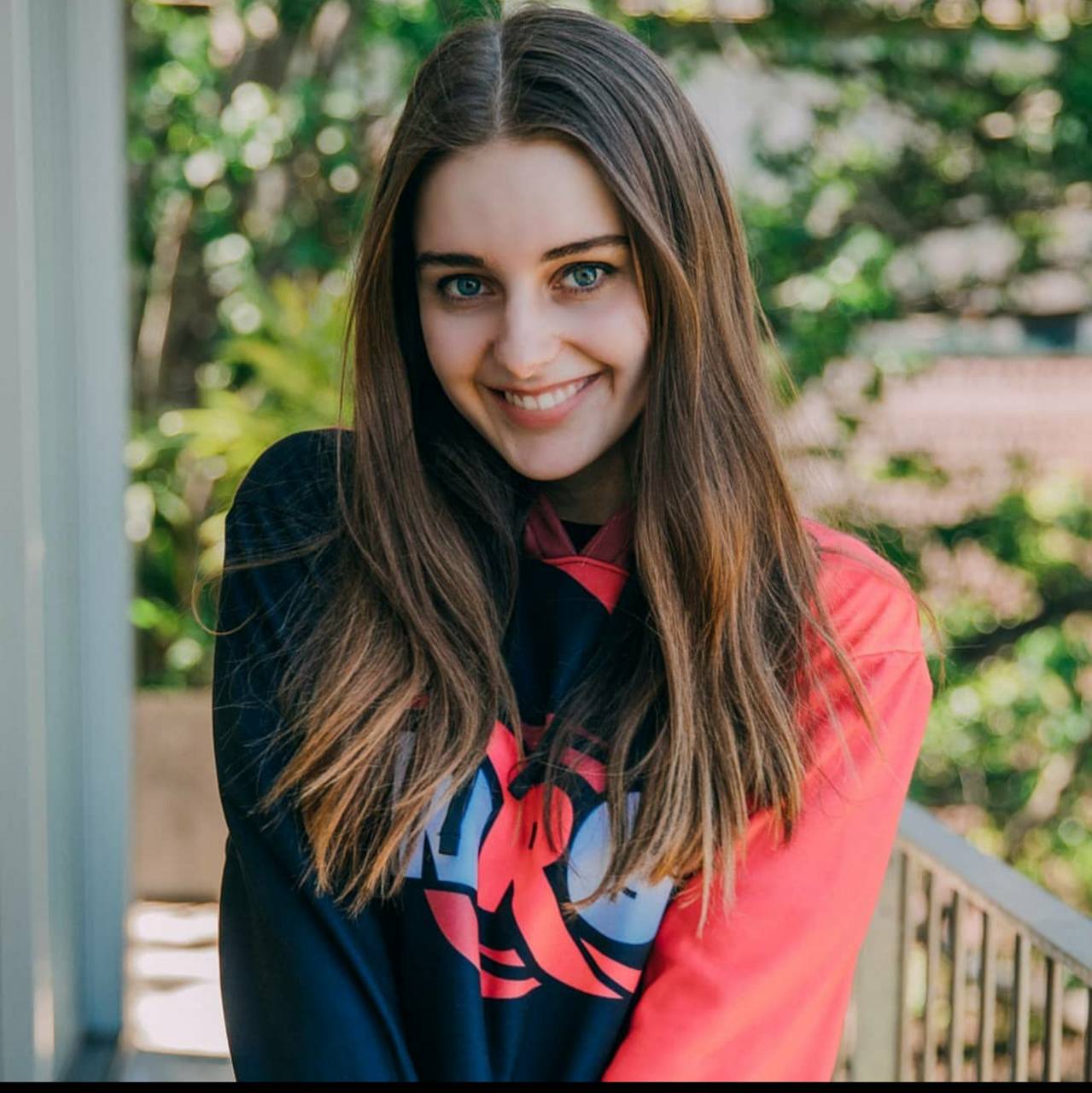Being part of an online group, you know, it's almost like stepping into a little world all its own, a place where people come together because they share a common interest. For many, that shared interest centers around creators who put their work out there for everyone to see. When we think about someone like Kathleen Loserfruit, it's clear she has quite a following, a group of people who really appreciate what she does. This kind of connection, where fans gather to talk about and celebrate a person's creative output, is actually a pretty neat thing to see.
You find these spaces, like the one built around Loserfruit, are more or less hubs where fans can share thoughts, talk about favorite moments, and just generally connect over their appreciation. It’s a space, so to speak, that grows and changes, typically with members joining and contributing to a shared experience. The kind of things people post, the conversations they have, and the overall feel of the group really come from the community itself, guided by some basic ideas about what's okay to share.
The digital landscape, you see, is a very interesting place, full of different kinds of content and ways for people to interact. For creators, having a dedicated group of supporters can be incredibly helpful, providing a spot for interaction and feedback. It also brings up questions about how content is managed, what kinds of things are appropriate, and how to keep a community a good place for everyone. This includes thinking about all sorts of media, even the trickier bits that might pop up.
Table of Contents
- Getting to Know Kathleen Loserfruit - A Community's Focus
- What Makes a Community Thrive - The Loserfruit_ Space
- What Sort of Content Gets Shared - The Rules Around Loserfruit Deepfakes
- How Does a Community Handle Sensitive Content - Considering Loserfruit Deepfakes
- What Does This Mean for Creators - Loserfruit Deepfakes and the Bigger Picture
Getting to Know Kathleen Loserfruit - A Community's Focus
When you hear the name Kathleen Loserfruit, it often brings to mind a person who has made a mark in the online world, drawing people in with her unique style and contributions. There's a whole community, actually, that has gathered around her, showing just how much impact one individual can have in the vast expanse of the internet. This group, or "sub" as it's often called, is really all about her, making sure that everything shared there relates directly to her presence and work. It's a pretty clear guideline, so to speak, that helps keep the focus on the person the community is built around.
The idea behind such a community is that it provides a central spot for fans to connect, share their thoughts, and celebrate the person they admire. It’s a place where discussions stay centered on Kathleen Loserfruit, whether it’s about her videos, her appearances, or anything else that connects back to her creative endeavors. This kind of dedication from a fan base is something special, showing a deep level of interest and support for a creator's efforts. It’s a testament, you might say, to the appeal and connection she has built with her audience.
For those who are just learning about Kathleen Loserfruit, it’s helpful to know a little about her. Based on the information available, here are some basic details:
| Name | Kathleen Loserfruit |
| Known For | Online content creation, community building |
| Associated Communities | Loserfruit_ (various subscriber counts mentioned) |
| Channel Activities | Promoting animated shows, "truth or dare" videos |
| Notable Content Detail | A "kitchen video" that had a censored version available |
This table, you see, provides a quick look at some of the things that stand out about her online presence, based on what her community members talk about. It’s a way to get a general idea of who she is, and what her content might involve.
What Makes a Community Thrive - The Loserfruit_ Space
A thriving online community, like the one dedicated to Loserfruit, is really a fascinating thing. It’s not just about the numbers, though those are pretty important, too. It’s about the people who show up, what they talk about, and the general atmosphere they create together. For a group to really work well, there needs to be a sense of shared purpose, a reason for everyone to be there. In this case, it’s a shared appreciation for Kathleen Loserfruit and her work, which serves as the glue, so to speak, that holds everything together.
The community space, specifically the one known as "loserfruit_", has seen different counts of people joining in. This tells us a little about how these groups grow and change over time. It’s not uncommon for numbers to shift, reflecting new people finding the community or others moving on. What stays consistent, however, is the central idea: that this space is for content connected to Loserfruit. This focus helps keep conversations relevant and the community true to its original purpose, which is, you know, pretty important for any group.
Beyond just having a lot of members, a good community also relies on how those members interact. Are they friendly? Do they support each other? Are the discussions interesting? These are the kinds of things that make a community feel welcoming and active. The general vibe, you might say, is just as important as the sheer size of the group. It’s about creating a place where people feel comfortable sharing their thoughts and connecting with others who share their interests, which is a big part of what makes these online spaces so appealing.
The Evolving Numbers - Loserfruit Deepfakes and Growth
Looking at the number of people who have joined the Loserfruit_ community, it’s quite interesting to see the different figures mentioned: 15,000, 14,000, and 13,000 subscribers. This kind of change in numbers, you know, is pretty typical for online groups. It shows a living, breathing community that has moments of gaining new members and, perhaps, times when some people move on. Each of these figures represents a significant number of individuals who have chosen to be a part of this particular fan space, indicating a sustained interest in Loserfruit’s presence.
The fact that the community has maintained such a substantial following, even with slight shifts in numbers, really speaks to the enduring appeal of Loserfruit’s content. It suggests that people find something valuable and engaging in what she does, something that makes them want to stick around and be part of the conversation. This kind of consistent engagement, so to speak, is a key indicator of a successful online presence, showing that a creator has built a lasting connection with her audience. It’s a good sign, really, of a dedicated fan base.
When thinking about the broader topic of online content and communities, particularly with something like "loserfruit deepfakes" in mind, the growth and management of these spaces become very important. A large community, while wonderful for support, also means more eyes and more content being shared. This naturally brings up questions about how to keep the space safe and respectful, especially when considering the potential for all sorts of media, some of which might be misleading or harmful. The community rules, therefore, play a really big part in keeping things running smoothly and safely for everyone involved.
What Sort of Content Gets Shared - The Rules Around Loserfruit Deepfakes
Every online community, you know, needs a set of guidelines to keep things in order, and the Loserfruit_ community is no different. The general idea is that you can post pretty much anything there, as long as it has something to do with Loserfruit and, very importantly, follows the rules that the community has put in place. These rules are there for a reason, to make sure the space stays welcoming and appropriate for everyone who joins. It’s a bit like having house rules, so to speak, to ensure everyone gets along and the environment stays pleasant.
The emphasis on content being "related to Loserfruit" is a clear way to keep the community focused. It means discussions and shared media should always tie back to her work, her life as a creator, or anything else that genuinely connects to her public persona. This helps prevent the space from becoming sidetracked by unrelated topics or, you know, things that don't really fit the community's purpose. It’s about maintaining relevance and making sure that members find what they expect when they visit the community.
Thinking about the rules in a broader sense, especially concerning topics like "loserfruit deepfakes," highlights the importance of moderation and community standards. While the community welcomes diverse content related to Loserfruit, the presence of rules means there are boundaries. These boundaries are put in place to protect both the creator and the community members from content that could be misleading, harmful, or just plain inappropriate. It’s a way to manage the flow of information and ensure that the shared space remains a positive one for all involved, which is, honestly, a big job for any community. The guidelines, you see, help shape the kind of interactions that happen.
Remembering Specific Moments - A Look at Loserfruit Deepfakes and Channel Content
Sometimes, a particular piece of content really sticks with people, and it seems that Loserfruit’s channel has had some memorable moments. One community member, for example, was trying to recall details about a video where she promoted an animated show. They couldn't quite remember the show’s name or what it was even about, but the fact that they remembered the promotion itself suggests it made some kind of impression. This kind of recall, you know, shows how much certain content can resonate with an audience, even if the specifics fade over time.
This situation, where a fan is trying to piece together details from a past video, really speaks to the personal connection viewers can feel with a creator’s work. It’s not just about watching; it’s about the experience and the memories that are formed. For creators like Loserfruit, knowing that her content leaves a lasting impression is probably a pretty good feeling. It means her efforts to entertain or inform are actually reaching people in a meaningful way, which is, well, what many creators hope for.
When we think about all the different kinds of content a creator might put out, and the possibility of something like "loserfruit deepfakes" entering the picture, the original, genuine content becomes even more important. The animated show promotion, or other videos she has made, are her authentic creations. They are the true representation of her work. This distinction between what is real and what might be fabricated becomes a very important consideration in the online space, especially as technology makes it easier to create convincing, but untrue, content. It’s a topic that, you know, needs a lot of thought from everyone.
How Does a Community Handle Sensitive Content - Considering Loserfruit Deepfakes
Managing an online community means dealing with all sorts of content, and sometimes, that content can be a bit sensitive. The Loserfruit_ community, for instance, has had discussions about a "kitchen video" that involved a "truth or dare" game. The detail that only a censored version of this video exists for the wider internet is, you know, pretty telling. It points to the fact that creators and communities often have to make decisions about what is appropriate for public viewing, especially when it involves something that could be considered private or, perhaps, a bit too revealing.
This situation with the "kitchen video" brings up important questions about how content is shared and consumed online. The existence of a censored version suggests that there was original material that someone, either Loserfruit herself or those managing the content, decided was not suitable for general release in its raw form. This kind of filtering or editing is a common practice, actually, to protect privacy, maintain a certain image, or simply adhere to platform guidelines. It’s a way to ensure that what goes out into the public sphere meets certain standards of appropriateness, which is a good thing.
The very idea of "loserfruit deepfakes" brings these discussions about sensitive content and censorship into sharper focus. While the source text doesn't say that deepfakes of Loserfruit exist, the concept itself highlights the challenges creators face. When content can be manipulated or created synthetically, it raises serious concerns about privacy, consent, and the truthfulness of what people see online. Communities and platforms have a big role to play in setting rules and enforcing them to prevent the spread of harmful or misleading content, especially when it involves a person’s likeness. It’s a very real concern, you see, for anyone with an online presence.
What About Privacy and Altered Media - Loserfruit Deepfakes and Online Safety
The mention of a censored version of a video, particularly one that involved something like "running around the kitchen naked," really brings the topic of privacy to the forefront. When a creator puts content out there, there's always a balance between sharing and keeping certain aspects of their life private. The decision to censor parts of a video suggests a conscious effort to protect that privacy, even within the context of a "truth or dare" game. It’s a reminder, so to speak, that even in seemingly lighthearted content, boundaries are often put in place for a good reason.
This leads us to the broader issue of altered media and its implications for online safety. The very term "loserfruit deepfakes" points to a type of content that is created or modified using technology to make it appear as if someone did or said something they didn't. This kind of technology, while impressive, carries significant risks, particularly for public figures. It can be used to create misleading or damaging content that can harm a person’s reputation, invade their privacy, or even put them at risk. It’s a very serious concern for anyone who spends time online, especially those who create content for others to see.
For communities like the one built around Loserfruit, having clear rules about what can and cannot be shared is absolutely essential in this environment. These rules act as a safeguard against the spread of harmful altered media. They help ensure that the content shared within the community is respectful, accurate, and does not violate anyone’s privacy. It’s a continuous effort, you know, to maintain a safe and positive space where genuine appreciation for the creator can flourish without the threat of malicious or inappropriate content. The community, in a way, becomes a protector of its shared space and the person it supports.
What Does This Mean for Creators - Loserfruit Deepfakes and the Bigger Picture
For people who create content and share it with the world, like Kathleen Loserfruit, the online space offers amazing opportunities to connect with an audience. However, it also comes with a unique set of considerations. Building a community, seeing subscriber numbers grow from 13,000 to 15,000, and having people remember specific videos, all show a creator's impact. Yet, this public presence also means thinking about things like privacy, content boundaries, and the potential for misuse of their likeness. It’s a balance, you see, between being open and staying protected.
The existence of communities with rules about what can be posted, and the need to censor certain parts of videos, highlights the ongoing effort creators make to manage their public image and protect their personal space. It’s not just about putting out entertaining content; it’s also about setting limits and ensuring that the digital footprint they leave is one they are comfortable with. This proactive approach to content management is, honestly, a very important part of being a public figure in today’s digital world.
When we bring up the idea of "loserfruit deepfakes," it serves as a reminder of the broader challenges that creators face in a world where technology can be used for both good and ill. The discussion around such topics isn't about specific instances, but about the general need for awareness, caution, and strong community guidelines. It’s about ensuring that the spaces built around creators remain places of genuine connection and appreciation, free from content that could be misleading, disrespectful, or harmful. Ultimately, it’s about fostering a safe environment for everyone involved, which is, you know, something everyone can agree on.
This article has explored the community built around Kathleen Loserfruit, touching on its growth, the kinds of content shared, and the importance of community rules. We looked at how members engage with her work, like remembering specific video promotions, and discussed the careful handling of sensitive content, such as the censored "kitchen video." The conversation also touched upon the broader implications for creators, especially concerning privacy and the potential for altered media, framing these points within the context of online safety and community well-being.


